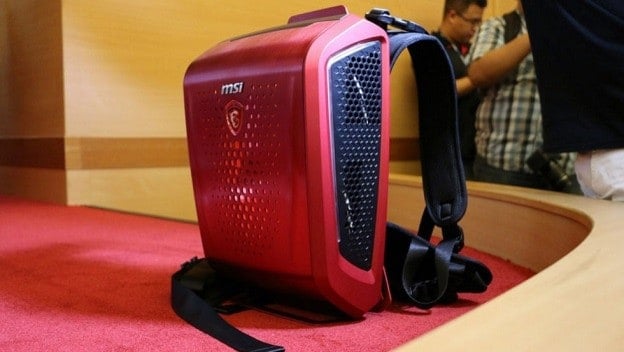When it comes to the Oculus Rift and PlayStation VR, we’re pretty much looking at a sitting experience. With the HTC Vive, however, you’re free to walk and move about within your virtual space, provided you have the actual room to do so. If you have a dedicated room for VR, the HTC Vive provides the most immersive experience by far, but you still have those pesky cables to worry about. It’s an accepted and necessary evil. You’re going to trip over your cables; leave boot prints on them; feel them brushing against your back and shoulders. It doesn’t have to be that way, though.
Until the cordless HMDs of the future make their way to consumers, the interim solution is backpack PCs. There are two viable options about to hit the market, and both were recently shown off at Computex 2016 (via PCGamer ). Zotac’s prototype looks like a typical, black, JanSport backpack with a porous, mesh front (to keep things cool). The model shown was able to power the Vive (running off of a GTX 980) for 2 full hours on a single battery charge, which is pretty darn impressive. MSI’s solution looks like something out of a comic book. This thing (pictured above) resembles a jet pack, and features a hard-but-light exterior to keep the guts protected. The battery is kept in a belt that ties around your waist, and lasts about an hour and a half on a single charge. While these seem like viable solutions to the cable problem, I’m wondering if this product is a bit too niche to really take off.
